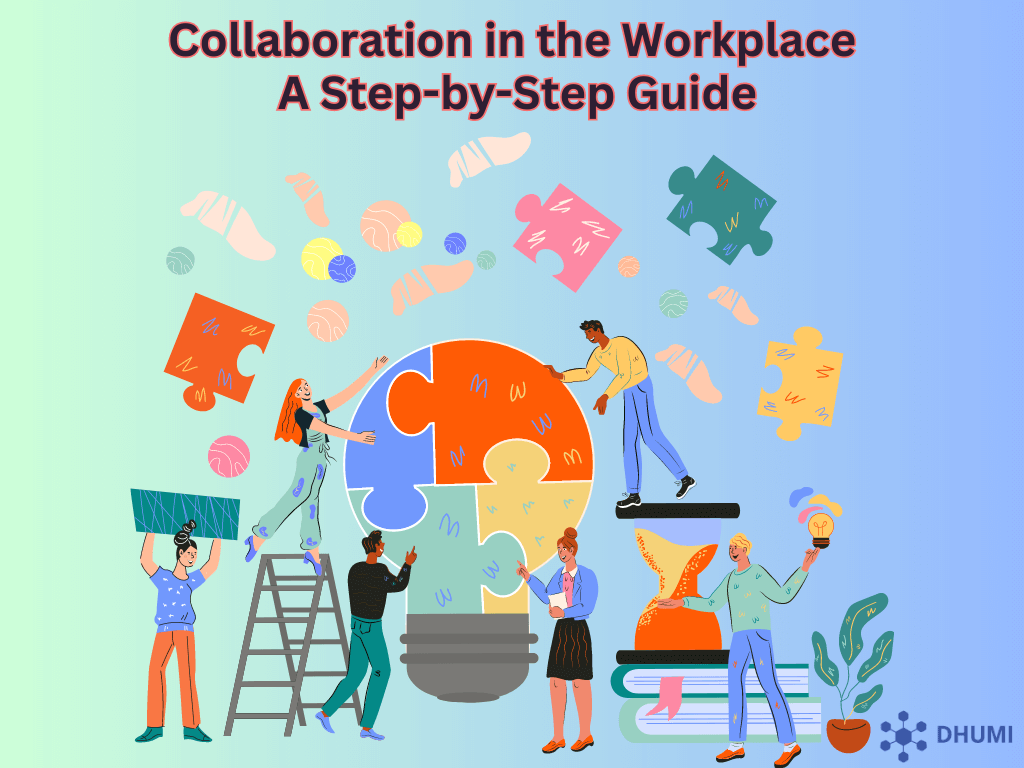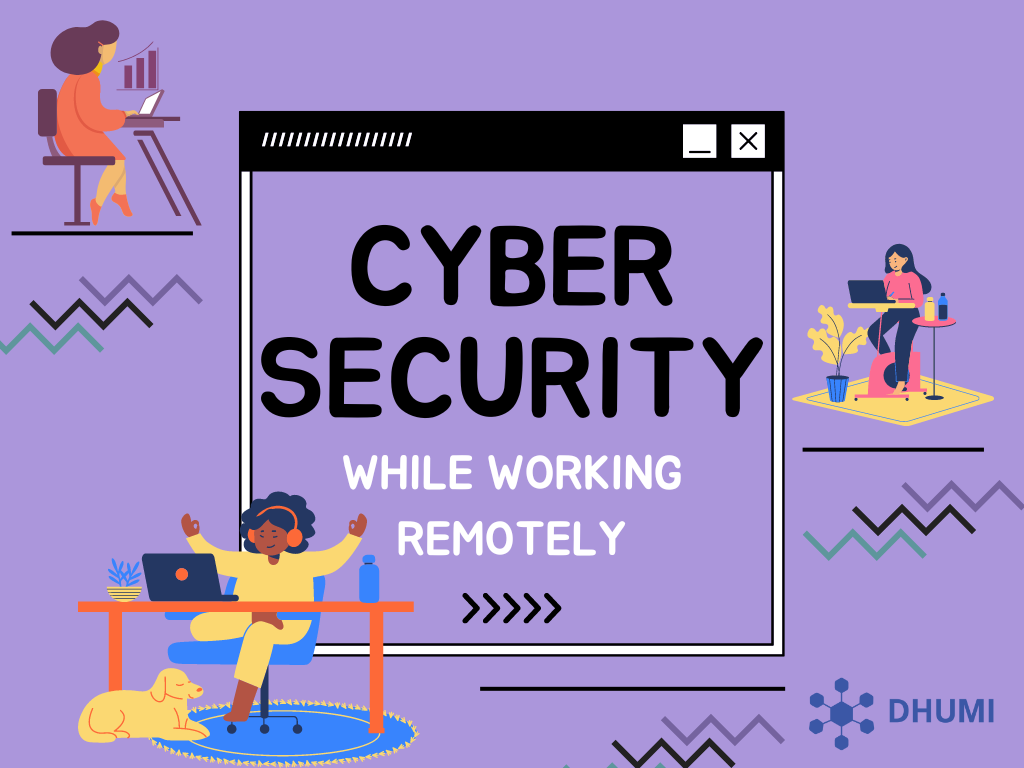
Collaboration in the Workplace: A Step-by-Step Guide
Collaboration is essential for any successful business. It is a vital part of staying competitive and finding innovative solutions. Meetings are an important part of the collaboration process, as they help to ensure that everyone is on the same page and that tasks are completed efficiently. In this blog post, we will provide a guide to successful meetings in the workplace, including tips on how to create an effective agenda, foster meaningful conversations, and make sure everyone is heard. With the right approach, meetings can be a powerful tool for collaboration and success.
Importance of collaboration
Success in the office is impossible without the ability to work together effectively. When members of an organization's many teams work together, they are better able to pool their resources, share their unique viewpoints, and reach agreements that benefit the whole.
When people in a team work together, they're more likely to come up with novel approaches to old challenges. The effectiveness of a team and its ability to communicate with one another may both be enhanced through collaborative efforts.
Collaboration has many useful outcomes, but it also has the potential to improve cooperation and trust in the workplace. Teams may learn to assist one another more effectively and work together toward a similar objective through collaboration. Workplace morale and dispute resolution may both benefit from increased opportunities for collaboration.
By engaging in collaboration, teams can increase productivity and improve their overall success. This can lead to improved performance and productivity, as well as an improved team dynamic.
Working together effectively is a key to success in the job. Companies that invest in creating an environment that encourages teamwork see gains in morale, efficiency, and output among their staff.
Types of Collaboration
It's crucial to have productive meetings at work if you want to get things done. It's crucial to have a well-defined goal and agenda for each meeting if you want to get anything done. Those who have a vested interest in the meeting's outcome should be invited.
Setting the ground rules and expectations in advance may help everyone get on the same page and prepared for the meeting.
Technology can be used to facilitate collaboration during a meeting. Utilize tools like video conferencing and interactive whiteboards to help everyone stay connected and engaged. Everyone should have the opportunity to contribute and voice their opinion. Encourage dialogue and the exchange of ideas to ensure all opinions are heard. Progress should be monitored throughout the meeting, and everyone should be held accountable for their part.
Recognize and honor those who have contributed to the meeting's success at its conclusion. Send a follow-up email detailing the next actions and action items that need to be completed to advance the project.
Key Elements for Successful Collaboration
The ability to work together effectively depends on the quality of the workplace environment. The first stage in developing a productive partnership is building mutual trust and admiration.
After mutual trust and respect have been built, it is time to make plans. Having well-defined goals is the first step to any productive partnership.
One of the most important aspects of productive teamwork is honest dialogue. Make sure everyone who wants to can share their thoughts and ideas. Prompt your team members with questions and welcome their input.
The process of brainstorming is excellent for coming up with novel ideas and approaches. Team members should be encouraged to use their imaginations and come up with novel approaches.
Creativity is necessary, but order is more crucial for productive teamwork. Distribute responsibilities and duties across team members to lighten everyone's burden.
Keeping tabs on everyone's development is also crucial for a productive team effort. Check in on how things are going and make any required changes.
Effective communication in collaborative meetings
Workplace collaboration is crucial to the success of any company. The key to a productive group session, whether it's a meeting or a brainstorm, is open lines of communication and everyone pitching in. Here are some things to keep in mind to make your meetings effective and efficient:
Create an agenda in advance to make sure everyone is on the same page and can prepare appropriately for their participation. This will also aid in maintaining order and continuity throughout the conference.
You may promote teamwork and open communication by asking questions that invite free-form answers. In this way, everyone may feel like they've had a voice in the discussion.
You may help to make sure that everyone's viewpoint is heard and understood by using active listening strategies, such as repeating back what you heard or summarizing the dialogue.
Benefits of Collaborative Meetings
In the business world, teamwork is crucial to the success of any meeting. Collective problem-solving and innovation flourish when team members talk to one another about their challenges and brainstorm possible solutions. This kind of cooperation boosts team morale and productivity by encouraging members to open up to one another.
In the business world, teamwork is crucial to the success of any meeting. Collective problem-solving and innovation flourish when team members talk to one another about their challenges and brainstorm possible solutions. Collaboration of this kind allows for the free flow of information and ideas, which in turn may boost productivity. It facilitates enhanced decision making, fosters improved problem solving and cooperation, and boosts workplace learning and innovation. Teams may accomplish more by working together in accordance with these guidelines and producing an effective gathering.
Strategies for Managing Conflicts in Collaborative Meetings
Successful businesses know the value of teamwork in the workplace. Facilitating productive, enjoyable meetings can do wonders for team morale, efficiency, and open lines of communication. The success of your meetings may be ensured by following these guidelines.
The effectiveness of a meeting depends on people feeling comfortable talking openly with one another. Let everyone have their say without worrying about what others will think.
Establish norms for behavior before the start of the gathering. Set restrictions on what may and cannot be said or done. This will guarantee that everyone is listening to each other and that the talk stays on course.
Listening actively is essential for successful meetings. Respect all views and acknowledge differences of opinion. Allow each person to finish their thoughts and ideas before responding. This will help show that you are taking their ideas and views into consideration.
Meeting success requires the ability to facilitate compromise. It's important to zero in on solutions that everyone can support. This will promote teamwork and make sure that everyone is pulling for the same goal.
Employers place increasing value on the capacity to empathize with others. Learn to see the situation from the other side's perspective.
Tools for Collaborative Meetings
Today's fast-paced corporate environment places a premium on effective teamwork. With the correct technology, teamwork in the office may be simplified and improved. Teams may gather and discuss in real time from multiple places using virtual meeting platforms like Dhumi, Zoom, Skype, and Google Hangouts. Internet whiteboards like Miro and Mural make it simple for groups to collaborate visually and digitally. Tools like Dhumi, Trello and Asana make it easier for groups to track progress on projects and meet deadlines.
Google Docs and Dropbox Paper are two examples of collaborative document editing platforms that facilitate real-time teamwork. Slack and similar group chat services provide rapid and effortless team communication and information sharing. WebEx and BlueJeans are just two of the many video conferencing programs that enable remote teams to meet face-to-face and work together effectively.
Teams can interact more efficiently with the correct technology, which in turn improves business results.
Teams may communicate and share ideas despite geographical distances thanks to virtual meeting technologies. Teams may use digital whiteboards to brainstorm and share ideas graphically. Teams might benefit from planning tools that help them stay organized and on schedule. Teams may edit documents together in real time with the help of collaborative document editing tools. Teams can connect and share ideas more efficiently thanks to group chat services.
Techniques for Brainstorming in Collaborative Meetings
Successful meetings and initiatives can only be accomplished through efficient workplace cooperation. Companies may promote a collaborative workplace that stimulates creativity and productivity by taking the time to brainstorm, dividing into teams, and using the correct technologies.
. As a result, more ideas are generated and more minds are engaged. It's important to foster an environment where everyone feels comfortable contributing and offering comments. It's more efficient to work in smaller groups rather than huge ones. This allows for more rapid idea generation. It's crucial to promote creative risk-taking and unconventional solutions throughout the brainstorming session. It's also helpful to ask questions that encourage thought and debate.
Many group brainstorming aids are at the group's disposal. Tools for group collaboration range from whiteboards and post-it notes to internet brainstorming apps. It's also crucial to evaluate proposed solutions and provide useful criticism. After collecting all of the thoughts, post-it notes may be used to arrange the thoughts and create a workable strategy.
Last but not least, writing down the thoughts spoken throughout the brainstorming session is crucial.
Best Practices for Productive Collaborative Meetings
Successful businesses know the value of teamwork in the workplace. Collaboration is the key to a team's success in terms of output and innovation. Meetings are more likely to be productive if participants know what is expected of them and how they will work together going in.
The first stage in developing a productive partnership is setting specific goals for the meeting and developing a detailed agenda to achieve those goals. Make sure you invite the appropriate people to the meeting and that it starts and ends on time. Take advantage of technology to include absent or far-flung attendees.
After the meeting has begun, it is important to promote free communication and participation. Make sure everyone is treated fairly and that there are no power struggles by establishing ground rules for the group. Designate a facilitator to keep the meeting on track and make sure everyone has a chance to speak. Taking notes during the meeting is also an excellent technique to record decisions and follow-ups.
Lastly, it's important to check in with attendees after the meeting to discuss next steps and make sure objectives are being accomplished. Keeping these suggestions in mind can help you have more effective meetings.
Measuring the Success of Collaborative Meetings
It takes time, effort, and careful planning to develop the skills necessary to lead a productive workplace collaboration meeting. Meetings are more productive when their goals are clearly stated and all attendees understand them. This will guarantee that the meeting stays on course and that everyone has a chance to speak. Meetings are more likely to result in fruitful and civil discussions when clear guidelines are established in advance. Successful cooperation relies on open lines of communication and active engagement from all parties involved.
Prioritize group-beneficial solutions above squabbling over who has the most valid point of view. Keeping track of meeting decisions and action items may be made easier with careful note-taking and documentation. Making sure no action items were forgotten requires following up after the meeting as well. Finally, it is crucial to assess the meeting's efficacy by looking at measures like attendance, productivity, and time saved.
By adhering to these guidelines, teams may organize collaboration sessions that are useful for everyone involved. Proper teamwork may cut down on wasted time and effort while also boosting output and morale.
How can I encourage participation in collaborative meetings?
Working together effectively is crucial for any business. Meetings are more likely to result in actionable outcomes if participants feel their voices are being heard and respected. This is a cheat sheet for holding productive meetings that can improve teamwork in the office.
Then, have everyone bring an object or subject they'd like to have discussed. Ask individuals open-ended questions and encourage them to contribute their ideas and opinions to get them involved. Take care that everyone is heard and that no one takes over the discussion. It will be much simpler for everyone to share their thoughts if we provide a welcoming space for teamwork.
It is also important to establish reasonable goals for the meeting in advance. Encourage teamwork by creating a dynamic environment with fun activities and rewarding participants.
This will make sure that everyone is heard throughout collaborative activities. With these guidelines, you can improve workplace cooperation and organize productive meetings.
What is the best way to manage time during collaborative meetings?
Meetings are more productive when they start and conclude on time, especially in the office. It demonstrates consideration for attendees' time and keeps the conference on schedule. Establishing the meeting's goals and objectives in advance might help keep attendees on track. To guarantee that activities are performed and objectives are fulfilled, it is beneficial to give responsibilities to the participants and delegate duties. Although free-flowing conversation is encouraged, participants should keep the meeting on course and make use of meeting minutes to ensure action is taken thereafter.
Furthermore, the use of online collaboration technologies like video conferencing software and document sharing may help guarantee a seamless process and maintain participant interest. Scheduling breaks is important to keep everyone refreshed and engaged. It's crucial to check in with attendees after a meeting to make sure everything went as planned. Successful and fruitful workplace cooperation is possible with the appropriate attitude.
What should I do if there is a disagreement during a collaborative meeting?
Working together is crucial to the job, and it's particularly important during meetings. It's crucial that everyone involved can voice their concerns and contribute to finding a solution. There are measures that can be taken to guarantee productive meetings.
The first step is to recognize and appreciate differences of opinion. Everyone should wait their turn to speak and listen attentively to other people's arguments. Probing inquiries may help you better comprehend the other person's position and identify areas of agreement. The best method to discover a solution is to work together to generate ideas.
. Keeping the conversation going after the meeting is over is also crucial. This will guarantee that the meeting accomplishes its intended purpose and that everyone is on the same page.
How can I ensure that everyone's ideas are heard during collaborative meetings?
Workplace success requires the teamwork of all employees. Facilitators may increase participation by providing open-ended questions, communicating the meeting's objective clearly, and giving everyone a chance to speak.
To make sure everyone is heard, it's also helpful to make an agenda and employ tools like video conferencing. In this way, everyone may provide their input, even if it's only a fleeting idea. The appointment of a facilitator is also helpful since it guarantees that everyone's opinions will be taken seriously.
It is crucial to pay close attention and participate actively in the meeting. Reiterating and summarizing what others have said throughout the discussion is also crucial. Taking notes during the meeting and giving everyone a copy of the notes afterward is also recommended. Finally, it's crucial to check in with everyone involved to show them that their thoughts are taken seriously.
What are some common mistakes to avoid during collaborative meetings?
Successful professionals understand the value of teamwork. A vital tool for every team is the team meeting, where members may debate ideas, plan, and make decisions together. Nonetheless, there are a few necessities for productive meetings.
It's a typical blunder to start a meeting without an agenda. A well-organized agenda will ensure that the meeting stays on topic and that everyone participates. Setting expectations in advance is also crucial. Everyone will be on the same page and act responsibly if rules and expectations are established from the outset. It's also crucial that everyone gets a fair shot at joining in.
It’s also important to designate a leader for the meeting. Having someone facilitate the discussion will help keep it organized and moving forward. Taking notes during the meeting is also essential. Recording ideas and decisions will help ensure that nothing is forgotten or overlooked. Finally, following up after the meeting is critical. Following up with action items and tasks will help keep everyone accountable and ensure that all tasks are completed.
You can guarantee the success and efficiency of your meetings by adhering to these guidelines. The four pillars of a successful meeting are an agenda, clear expectations, a designated leader, and thorough notes.





